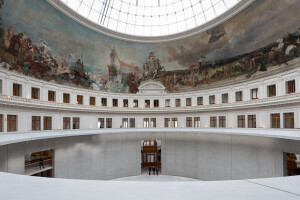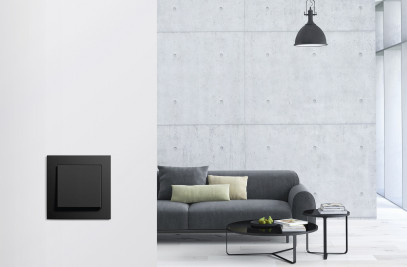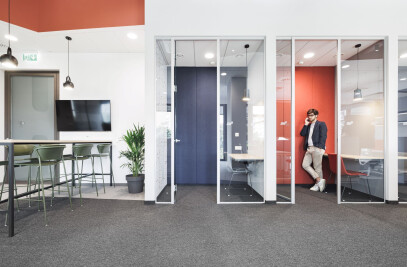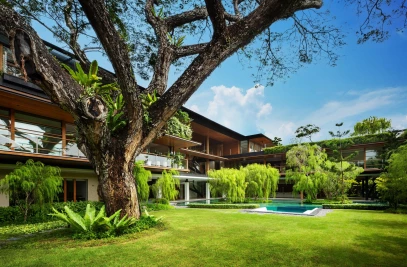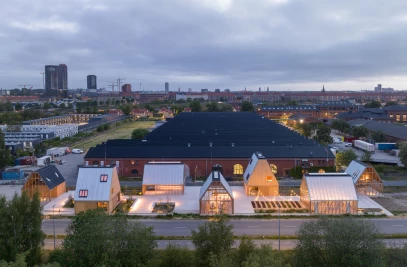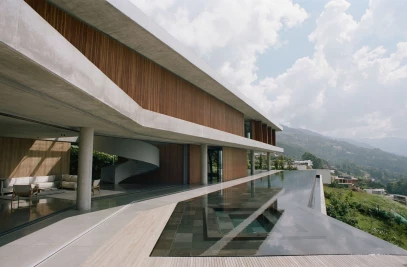Tadao Ando intended to transform the historical Bourse de Commerce, in the heart of Paris, into a museum of contemporary art without interfering with the building. Therefore he opted for a nesting box approach. He inserted a 29-meter-wide cylinder, delimited by a 9-meter-high concrete wall, inside the rotunda of the Bourse.

The architect tried to remain faithful to the urban symmetrie of the city with the cylindrical concrete volume. He created a composition of concentric circles that opens a dialogue between the old and the new.

According to Ando, in Japan the circle signifies both “nothingness” and at the same time “whole”, which is exactly the contradictory ambiguity he was looking for. The openings are placed in a dyssemetrical way to unbalance the design and maintain a form of imperfection.

The five levels inside the cylinder have exhibition spaces on the first three floors, an auditorium in the basement, and a restaurant and cafe on the top. On the ground floor there is a bookshop.

On the second floor a passageway offers a walk around the cylinder with a unique view of the glass roof and wall painting. The painting was made by five artists in 1889 to represent French trade across the continents.

The passageway is a traditional Japanese architectural principle to allow the visitor to “purify” themselves before entering the rotunda. Once inside the rotunda the visitor can move around at their own pace.













